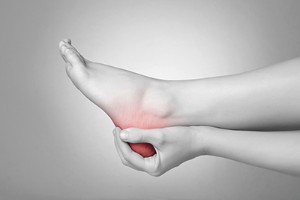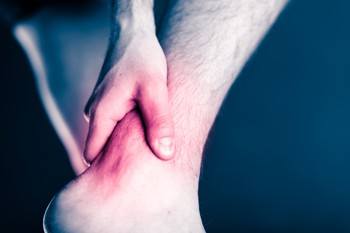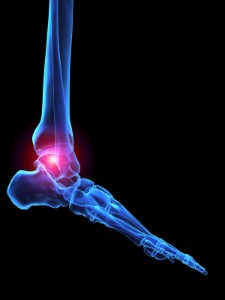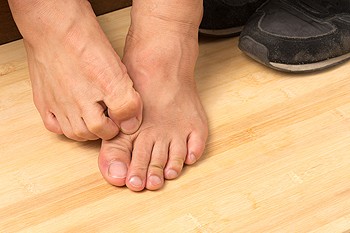 Plantar fasciitis, a common overuse injury that results in inflammation of the ligament that runs along the bottom of the foot, can be a very painful and persistent ailment. The most common symptom of plantar fasciitis is intense heel pain that is usually at its worst upon taking your first steps in the morning. Without treatment, plantar fasciitis can worsen over time and can cause foot pain that interferes with daily activities. Full recovery from plantar fasciitis can take between 6 to 8 weeks, and in some cases may take several months. Treatments for this condition are typically conservative and involve resting and icing the foot, modifying your activities and footwear, and taking anti-inflammatory medications to reduce pain. If you have plantar fasciitis, please seek the care of a podiatrist.
Plantar fasciitis, a common overuse injury that results in inflammation of the ligament that runs along the bottom of the foot, can be a very painful and persistent ailment. The most common symptom of plantar fasciitis is intense heel pain that is usually at its worst upon taking your first steps in the morning. Without treatment, plantar fasciitis can worsen over time and can cause foot pain that interferes with daily activities. Full recovery from plantar fasciitis can take between 6 to 8 weeks, and in some cases may take several months. Treatments for this condition are typically conservative and involve resting and icing the foot, modifying your activities and footwear, and taking anti-inflammatory medications to reduce pain. If you have plantar fasciitis, please seek the care of a podiatrist.
Plantar fasciitis can be very painful and inconvenient. If you are experiencing heel pain or symptoms of plantar fasciitis, contact one of our podiatrists from Biebel & DeCotiis Podiatry Associates. Our doctors can provide the care you need to keep you pain-free and on your feet.
What Is Plantar Fasciitis?
Plantar fasciitis is the inflammation of the thick band of tissue that runs along the bottom of your foot, known as the plantar fascia, and causes mild to severe heel pain.
What Causes Plantar Fasciitis?
- Excessive running
- Non-supportive shoes
- Overpronation
- Repeated stretching and tearing of the plantar fascia
How Can It Be Treated?
- Conservative measures – anti-inflammatories, ice packs, stretching exercises, physical therapy, orthotic devices
- Shockwave therapy – sound waves are sent to the affected area to facilitate healing and are usually used for chronic cases of plantar fasciitis
- Surgery – usually only used as a last resort when all else fails. The plantar fascia can be surgically detached from the heel
While very treatable, plantar fasciitis is definitely not something that should be ignored. Especially in severe cases, speaking to your doctor right away is highly recommended to avoid complications and severe heel pain. Your podiatrist can work with you to provide the appropriate treatment options tailored to your condition.
If you have any questions please feel free to contact one of our offices located in Holmdel and Middletown, NJ . We offer the newest diagnostic and treatment technologies for all your foot and ankle needs.











